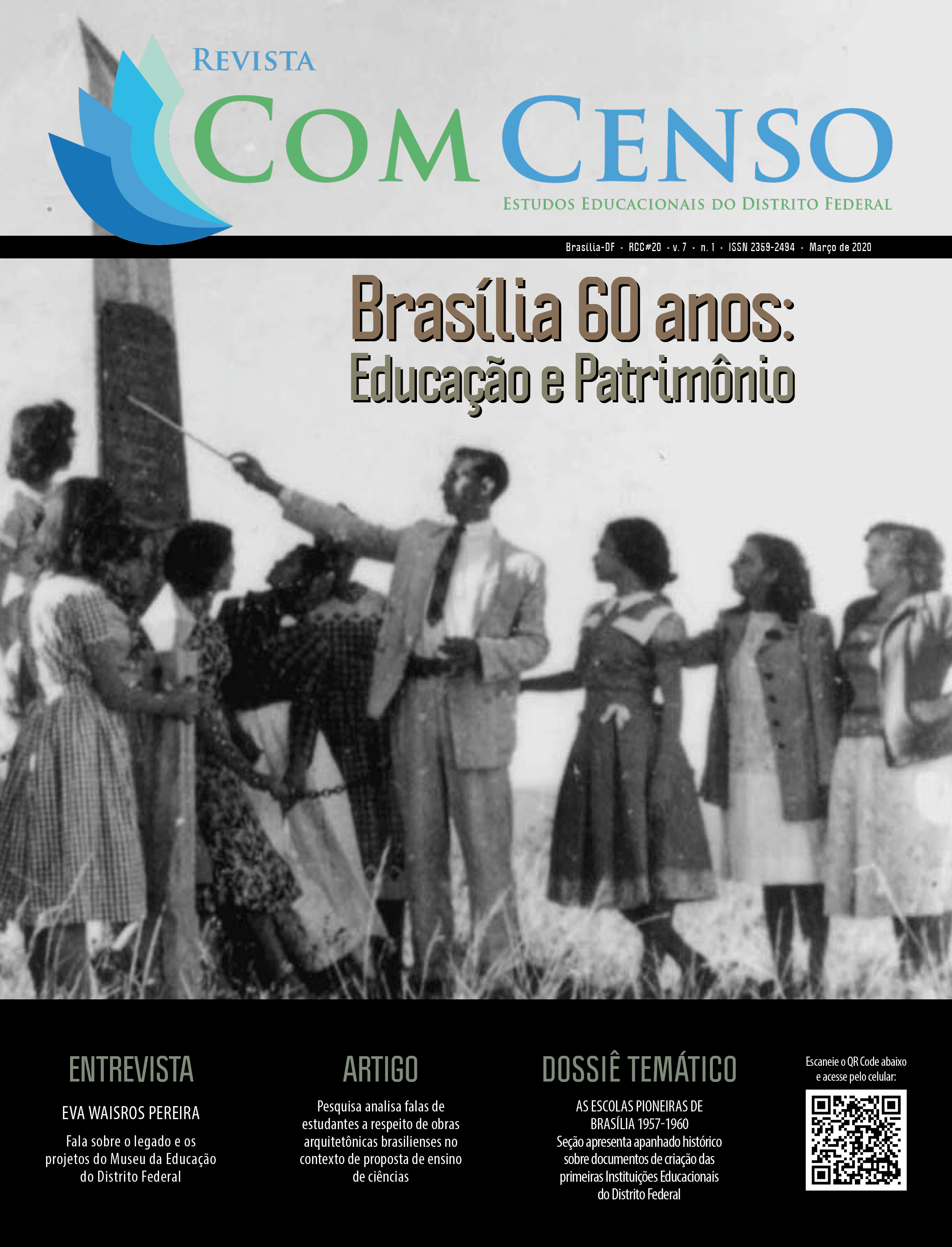Ensino de línguas no CIL: A política pública como patrimônio ou sobre como ele me faz tão bem
Palavras-chave:
CIL, Ensino de Línguas, Patrimônio, Memória, Identidade, PertencimentoResumo
Os Centros Interescolares de Línguas são unidades escolares da rede pública de ensino do DF com objetivo precípuo de ensinar língua estrangeira. Pela qualidade dos resultados que têm entregue ao longo de 45 anos no Distrito Federal, os CILs sempre recebem manifestação de apreço e gratidão, marcas da valorização dessas instituições. Este artigo tem como objetivo verificar se essa política pública encontra no conceito de patrimônio (abarcando as dimensões de história, pertencimento e identidade) as características que a alce à categoria de patrimônio. Após a discussão sobre o conceito de patrimônio e suas categorias (memória, identidade e pertencimento), é possível admitir que eles são, na percepção de sua comunidade, verdadeiros patrimônios do DF. O levantamento de dados foi feito por meio de entrevista a vários membros da comunidade de CIL. Os dados foram validados na medida em que se tornavam recorrentes nas respostas dos participantes. Assim, os dados recorrentes foram suficientes para se formar um juízo indiciário do impacto positivo que essa rede de escolas tem na comunidade do DF. As escolas cumprem requisitos de identificação, memória e pertencimento.
Palavras-chave: CIL. Patrimônio. Ensino de Línguas. Memória. Identidade. Pertencimento.
Language teaching at CIL: Public policy as an asset or about how it makes me so good
Abstract: The Interscholastic Language Centers are school units in the public education system of the Federal District with the main objective of teaching a foreign language. For the quality of the results they have delivered over 45 years in the Federal District, the CILs always receive expressions of appreciation and gratitude, marks of the appreciation of these institutions. This article aims to verify whether this public policy finds in the concept of heritage (encompassing the dimensions of history, belonging and identity) the characteristics that raise it to the category of heritage. After discussing the concept of heritage and its categories (memory, identity and belonging), it is possible to admit that they are, in the perception of their community, true assets of the DF. Data collection was carried out through interviews with various members of the CIL community. Data were validated as they became recurrent in the participants' responses. Thus, the recurrent data were enough to form an indicative judgment of the positive impact that this network of schools has on the DF community. Schools meet identification, memory and membership requirements.
Keywords: CIL. Patrimony. Language Teaching. Memory. Identity. Belonging.









